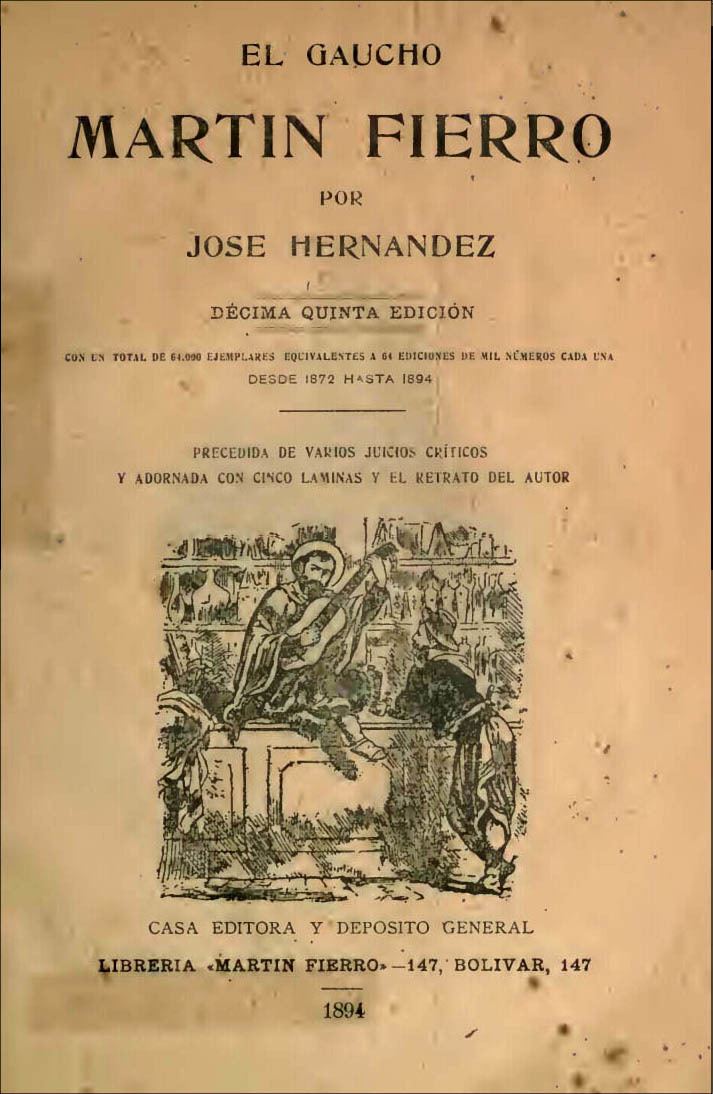 | ||
Gaucho literature, also known as gauchesco ("gauchoesque") style was a literary movement purporting to use the language of the gauchos, comparable to the American cowboy, and reflecting their mentality. Although earlier works have been identified as gauchoesque, the movement particularly thrived from the 1870s to 1920s in Argentina, Uruguay and south of Brazil after which the movement petered out, although some works continued to be written. Gauchoesque works continue to be read and studied as a significant part of Argentine literary history.
Contents
- Significant works and authors of Gaucho literature
- Poetry
- Novels
- Other Argentine writers
- Other Uruguayan writers
- References
The movement arose as writers in those countries developed their understanding of their national identities. Three great poets in this trend were, José Hernández, Estanislao del Campo and Hilario Ascasubi.
The influence of folk music and a countrified language has always, to some extent, been felt in popular literature, as, for example, in the folk-flavoured poetry of the Uruguayan gauchoesque poet Bartolomé Hidalgo (1788–1822; unless otherwise noted, each year in this article links to its corresponding "[year] in literature" article). And the influx on the soul which the gaucho exercises can be felt on the work of much later writers who loved the country scene of Argentina and Uruguay, such as Ricardo Güiraldes, Benito Lynch and Enrique Amorim. This is particularly true of even the most modern Uruguayan literature.
With Mark Twain's attempt to reproduce the dialect of Missouri boys, slaves, "injuns", etc., gauchoesque literature actually aspires to use, to perpetuate what purports to be the actual language of the gauchos.
Significant works and authors of Gaucho literature
Each year links to its corresponding "[year] in literature" article, except for poetry, which links to its "[year] in poetry" article:
Poetry
Novels
Other Argentine writers
In chronological order by birth year;
